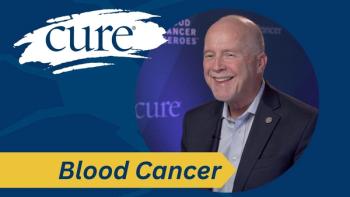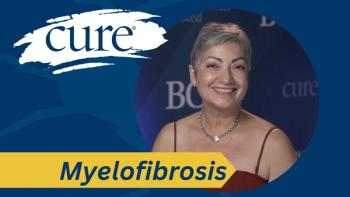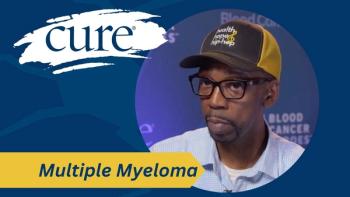
Tumor Treating Fields With Standard of Care May Significantly Improve Survival in Metastatic NSCLC
Tumor treating fields therapy “is a potentially paradigm-shifting new treatment modality” for metastatic non-small cell lung cancer, says Dr. Ticiana Leal.
The use of tumor treating fields with standard-of-care therapies induced a clinically meaningful improvement in survival in patients with metastatic non-small cell lung cancer (NSCLC), according to data from a phase 3 trial.
According to data from the LUNAR trial presented at the 2023 ASCO Annual Meeting, adding tumor treating fields to standard of care reduced the risk for death by 26%.
“(Tumor treating fields) therapy should be considered part of standard of care for metastatic non-small cell lung cancer following progression after platinum-based chemotherapy,” Dr. Ticiana Leal, a researcher and medical oncologist at Winship Cancer Institute of Emory University and associate professor and director of the thoracic medical oncology program in the department of hematology and medical oncology at Emory University School of Medicine in Atlanta, said during a presentation of the data. “(tumor treating fields) therapy is a potentially paradigm-shifting new treatment modality.”
Median overall survival (the time when a patient is still alive after treatment) for patients in this trial was 13.2 months with tumor treating fields plus standard of care, compared with 9.9 months with standard of care alone. With the addition of tumor treating fields, one- and three-year overall survival rates were 53% and 18%, respectively, compared with 42% and 7% in the standard of care-alone group.
Among patients treated with an immune checkpoint inhibitor, median overall survival was 18.5 months with the addition of tumor treating fields, compared with 10.6 months with standard of care alone, reducing the risk for death by 37%. Among patients treated with docetaxel, median overall survival was 11.1 months and 8.9 months, respectively, reducing the risk for death by 19%.
Patients with non-squamous histology demonstrated a median overall survival of 12.6 months with tumor treating fields, compared with 9.9 months with standard of care alone, while those with squamous histology demonstrated medians of 13.9 months and 10.1 months, respectively.
Median progression-free survival (the time during and after treatment when a patient with cancer is alive without disease worsening) with the addition of tumor treating fields was 4.8 months, compared with 4.1 months with standard of care alone.
In the tumor treating fields arm, the overall response rate (the percentage of patients with a partial or complete response to treatment) was 20% – including 3% of patients with a complete response (disappearance of all signs of cancer from treatment), 18% with a partial response (decrease in tumor size), 49% with stable disease (cancer that is neither increasing or decreasing in severity), 18% with progressive disease (cancer that is spreading, growing or worsening), and 2% who were not evaluable – compared with 17% with standard of care alone – which included 1% of patients with a complete response, 17% with a partial response, 47% with stable disease, 26% with progressive disease, and 1% who were not evaluable.
Of note, all 5 complete responses occurred in patients receiving an immune checkpoint inhibitor, 4 of which were in the tumor treating fields arm.
Side effects occurred in 97% of the tumor treating fields arm and 91% of the standard of care-alone arm. The incidence of tumor treating fields-related side effects was 71%; however, the majority were mild to moderate local skin irritation. Eight patients (6%) reported a severe side effect, and there were no life-threatening toxicities and no deaths attributable to tumor treating fields.
The most common any grade side effects in the tumor treating fields arm were skin inflammation (43%), musculoskeletal pain (36%), fatigue (28%), anemia (23%), shortness of breath (20%), diarrhea (19%), nausea (19%), cough (18%), low counts of white blood cells called leukocytes (17%), pneumonia (15%), respiratory tract infection (15%), localized swelling (15%), and hair loss (10%).
Most device-related side effects were mild to moderate skin inflammation, which resolved in 87% of cases after a median duration of three weeks.
“The results of the LUNAR study are highly encouraging,” Leal said in a press release. “The LUNAR trial is the first study in more than seven years to show a significant improvement in overall survival in metastatic non-small cell lung cancer post-platinum chemotherapy. I am heartened by this progress and the potential of this innovative therapy to help many metastatic lung cancer patients in need of new treatment choices following platinum therapy, without added systemic toxicity.”
Tumor Treating Fields in Cancer Treatment
Tumor treating fields are electric fields that exert physical forces on electrically charged intracellular components in dividing cancer cells, which affect and disrupt mitosis (when a single cell divides to make two cells). In turn, this leads to aneuploidy (extra or missing chromosomes) and induction of endoplasmic reticulum stress, which includes downstream effects such as immunogenic cell death, triggering a systemic anti-tumor immune response, Leal explained.
“(Tumor treating fields) therapy is a noninvasive anti-cancer treatment modality,” she added, explaining that the electric fields are generated by a portable, at-home medical device and delivered to the tumors through two pairs of arrays applied to the chest with local regional delivery.”
Preclinical evidence has supported activity from treatment with tumor treating fields in combination with checkpoint inhibitors and taxanes. In addition, a pilot study demonstrated the safety and feasibility of tumor treating fields therapy with pemetrexed in advanced NSCLC.
Currently, tumor treating field therapy is approved for glioblastoma and malignant pleural mesothelioma.
Unmet Need
Leal highlighted the fact that metastatic NSCLC remains incurable for the most part, and unfortunately, most patients will develop disease progression with a five-year survival of only 9%.
“There remains a high unmet need for new, effective and well tolerated therapies in the second line and beyond,” she said.
Therefore, Leal and colleagues evaluated the safety and efficacy of tumor treating fields therapy with standard of care, compared with standard of care alone, in metastatic NSCLC that progressed on or after platinum-based therapy.
In the phase 3 LUNAR study, 276 patients were randomly assigned to receive either tumor treating fields plus standard of care – which included investigator’s choice of an immune checkpoint inhibitor or docetaxel – or standard of care alone.
To be eligible for the trial, patients had to be 22 years or older, have metastatic NSCLC, progression on or after a platinum-based therapy, and an ECOG performance status of 0-2.
Researchers focused on several areas throughout the trial including overall survival, progression-free survival, overall response rate, quality of life and safety.
“The LUNAR trial results represent tremendous progress for the treatment of metastatic non-small cell lung cancer, and the LUNAR trial demonstrates the broad and versatile potential of (tumor treating fields) therapy in improving the survival of cancer patients with high unmet needs,” William Doyle, executive chairman of Novocure, said in the release. “We are energized by the LUNAR results and are moving forward quickly to make (tumor treating fields) therapy available to patients with metastatic non-small cell lung cancer.”
For more news on cancer updates, research and education, don’t forget to




